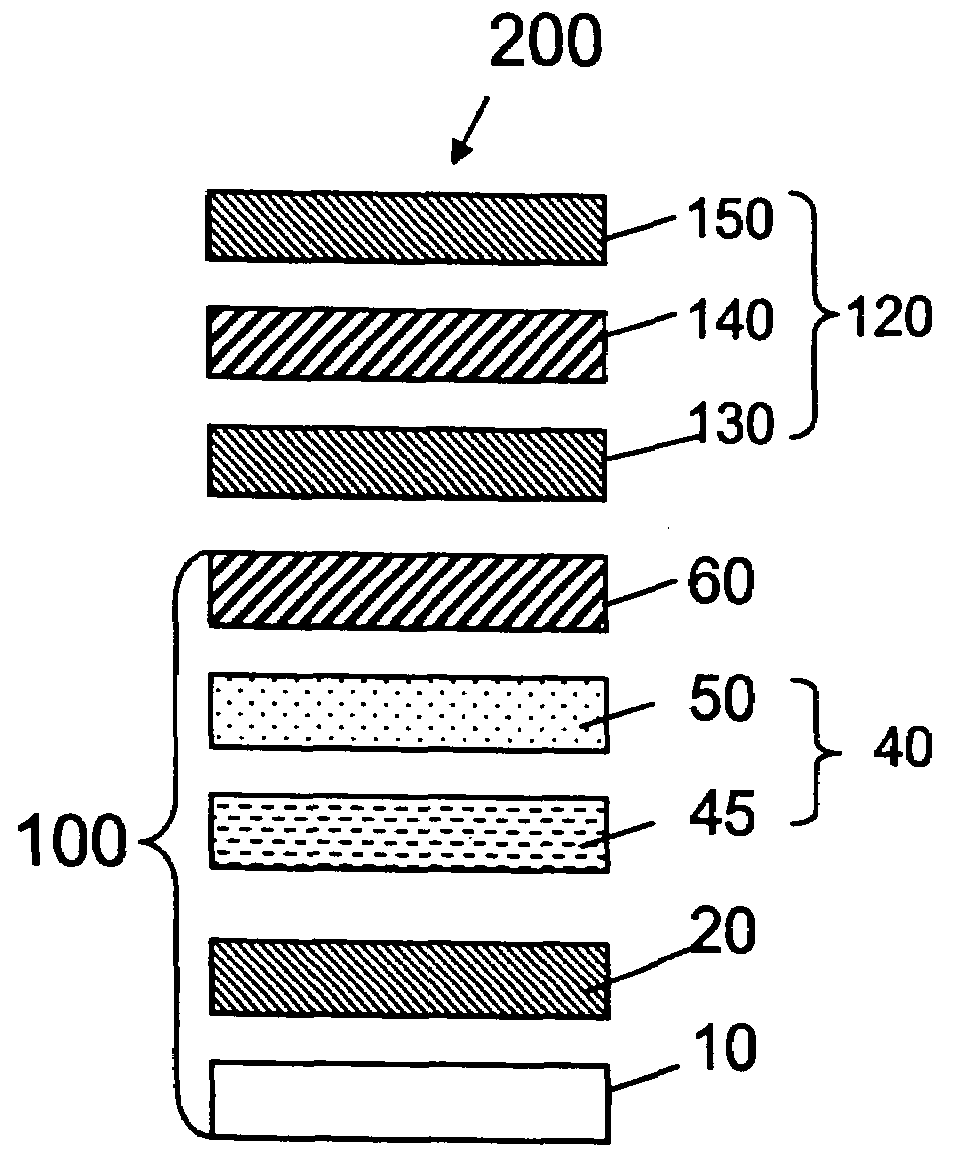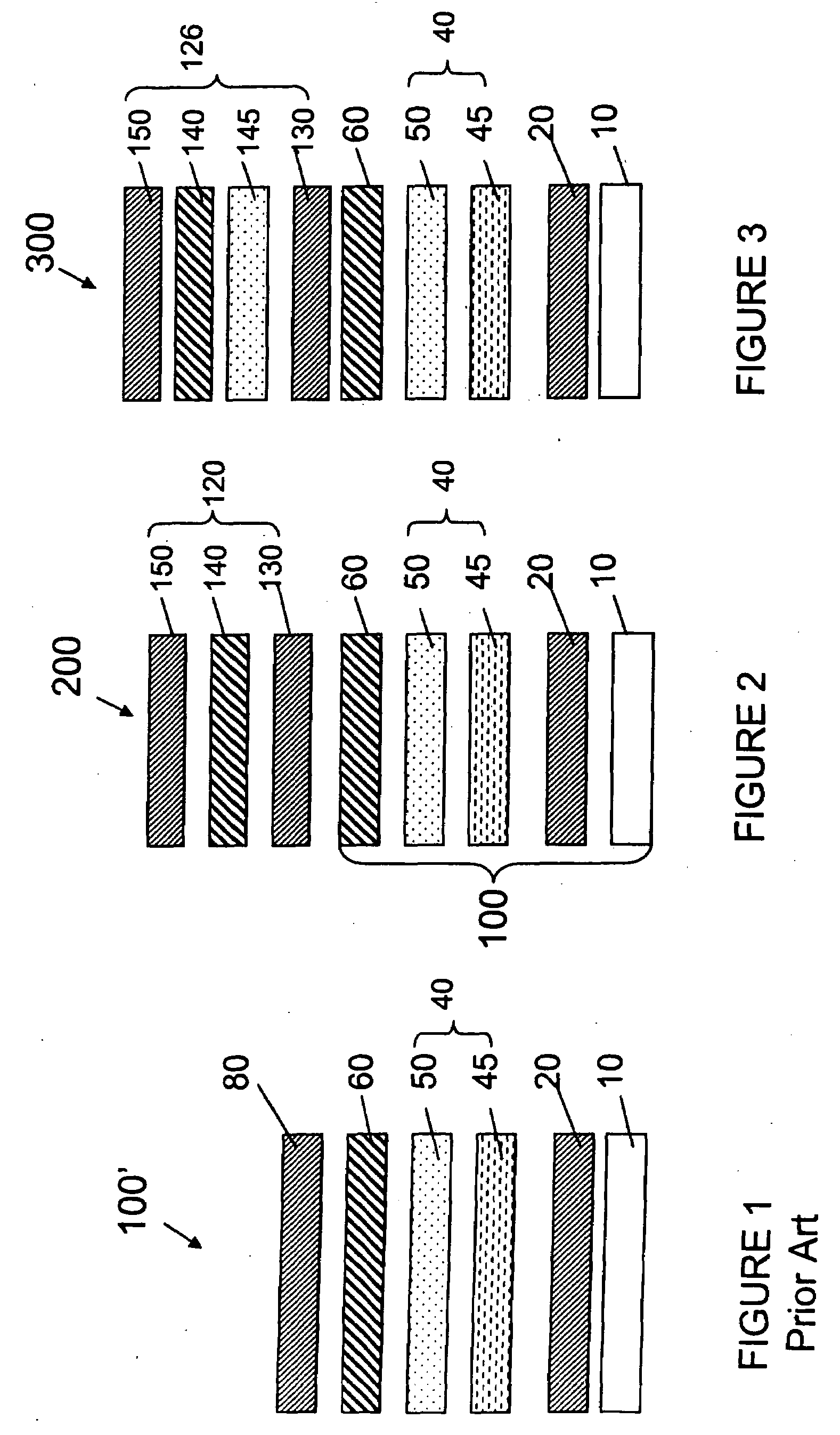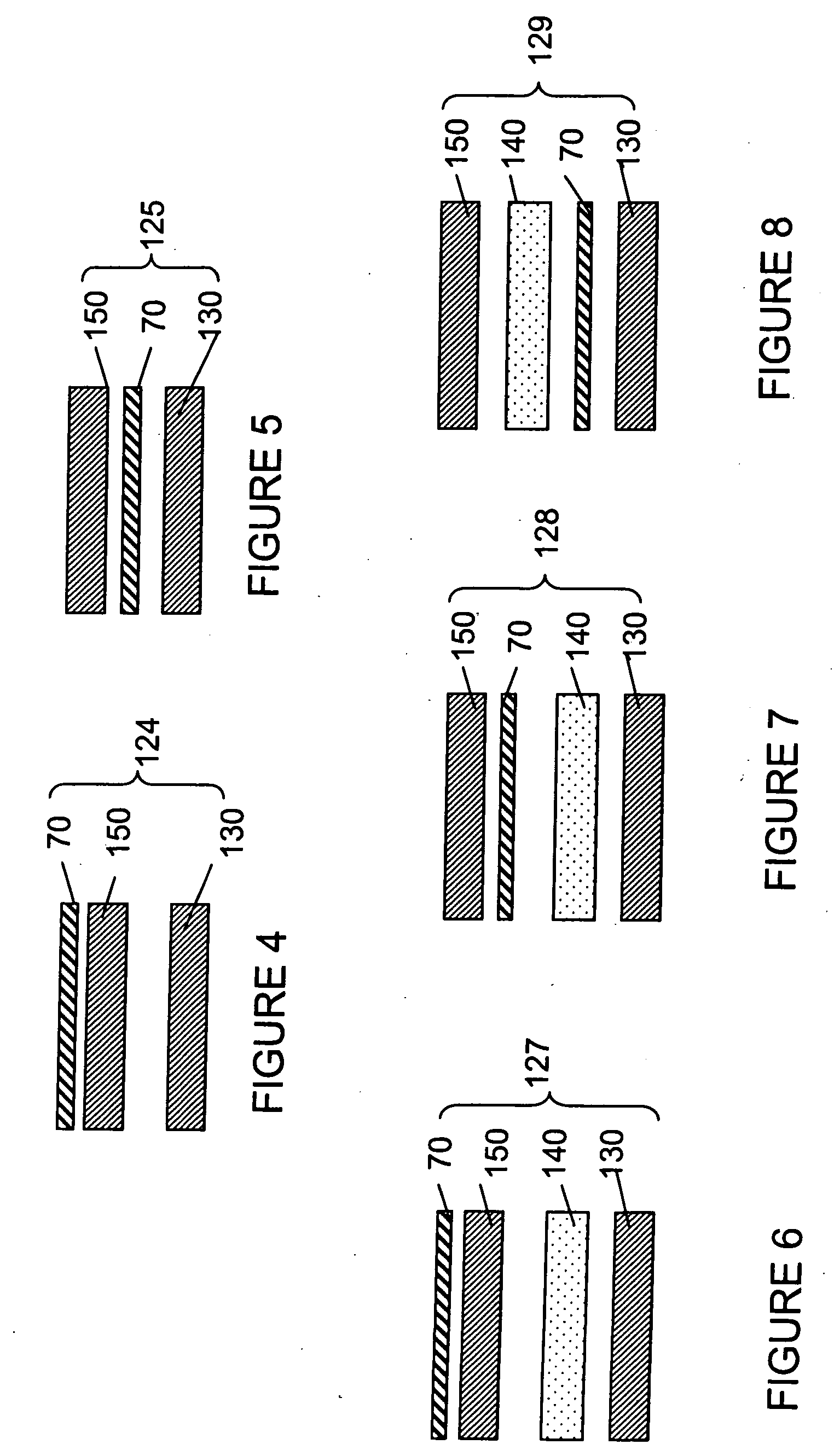Electrically conductive protective liner and method of manufacture
a protective liner and electrically conductive technology, applied in the direction of synthetic resin layered products, coatings, transportation and packaging, etc., can solve the problems of poor static draining, poor abrasion resistance, and inability to meet the requirements of stealth jet fighters, and the current canopies do not have good static draining and poor abrasion resistan
- Summary
- Abstract
- Description
- Claims
- Application Information
AI Technical Summary
Benefits of technology
Problems solved by technology
Method used
Image
Examples
Embodiment Construction
[0019]In the following description, and in the claims, various layers are described as being “positioned” over or “on” one or more additional layers, and this language simply denotes the relative positions of the layers. Thus, in some embodiments, two adjacent layers are literally right next to each other, while in other embodiments, the same two layers are separated by one or more additional layer(s). In each case, one of the two layers is considered to be “positioned over” or “on” the other layer, unless otherwise noted.
[0020]As used herein, the term “precoated substrate” refers to a substrate that has been protected (e.g., coated) with one or more layer(s) of metal particles and / or metal oxide to make the substrate conductive. The substrate can be made of glass or plastic, coated or uncoated, and may form a window, a windshield of a car, aircraft, or boat, a building, or another structure.
[0021]When various compositions are described, it is to be understood that the stated percen...
PUM
| Property | Measurement | Unit |
|---|---|---|
| Electrical resistance | aaaaa | aaaaa |
| Electrical resistance | aaaaa | aaaaa |
| Weight | aaaaa | aaaaa |
Abstract
Description
Claims
Application Information
 Login to View More
Login to View More - R&D
- Intellectual Property
- Life Sciences
- Materials
- Tech Scout
- Unparalleled Data Quality
- Higher Quality Content
- 60% Fewer Hallucinations
Browse by: Latest US Patents, China's latest patents, Technical Efficacy Thesaurus, Application Domain, Technology Topic, Popular Technical Reports.
© 2025 PatSnap. All rights reserved.Legal|Privacy policy|Modern Slavery Act Transparency Statement|Sitemap|About US| Contact US: help@patsnap.com



